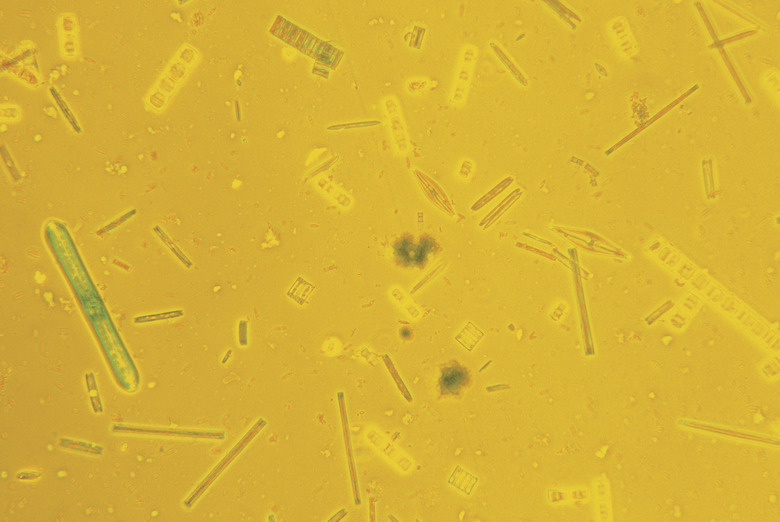What Does The Diatom Do In The Ecosystem?
They're so tiny you can't usually see them without a microscope, but despite their miniscule size, diatoms play a crucial role in one of the largest ecosystems on the planet. These single-celled algae are a type of plankton. They turn sunlight into chemical energy through photosynthesis, so they're a vital component of ocean ecosystems — and of many freshwater ecosystems as well.
Oxygen and Diatoms
Oxygen and Diatoms
Somewhere between a fifth and a quarter of all photosynthesis on our planet is carried out by diatoms. That means that as much as a quarter of Earth's oxygen comes from diatoms. Since humans and all other animals need oxygen to breathe, we all rely indirectly on diatoms to sustain us. By fixing carbon or converting it from carbon dioxide into sugar, diatoms also reduce the amount of carbon dioxide in the atmosphere just as terrestrial plants do.
Food
Food
In the ocean, diatoms are eaten by tiny animals called zooplankton. Zooplankton in turn sustain larger organisms, like fish, so many animals in the ocean depend on diatoms either directly or indirectly for their survival. Diatoms are responsible for over 40 percent of photosynthesis in the world's oceans, and without them, the ocean would be unable to support the amount of life that it does. Diatoms are a key source of food and energy for other organisms in many freshwater ecosystems as well. Snails, caddis fly larvae, small crustaceans and filter feeders like clams are among the many animals in freshwater systems that graze on diatoms.
Algal Blooms
Algal Blooms
Under nutrient-rich conditions in fresh water, algae can grow out of control, resulting in an algal bloom that may be harmful to other organisms like fish. Sometimes algae in the bloom produce toxins that are dangerous to animals. Since diatoms are one of the most common kinds of algae, they are typically a critical part of these blooms. When they grow in abundance, diatoms can also colonize and adhere to man-made surfaces, sometimes necessitating expensive cleanup and repair.
Fossils
Fossils
One of the most unusual features of diatoms are their silica-based shells. When diatoms die, their shells fall to the bottom of the water body they inhabit and accumulate as sediment. Biologists can use this sediment to help track water quality trends in an ecosystem by using it to figure out the type and abundance of diatoms both now and in the past. Sometimes diatom shells in seafloor sediment can over time become diatomaceous earth. Some ancient diatomaceous earth deposits that were once seafloor sediment are today dry land. Diatomaceous earth mined from these deposits has a wide variety of important industrial uses as a filter and abrasive; some organic gardeners employ it for pest control. Diatoms compacted beneath sediment may also, over time, become compressed to form oil, so diatoms are indirectly responsible for much of the fuel we burn in our cars today.
Cite This Article
MLA
Brennan, John. "What Does The Diatom Do In The Ecosystem?" sciencing.com, https://www.sciencing.com/diatom-ecosystem-5157/. 6 August 2018.
APA
Brennan, John. (2018, August 6). What Does The Diatom Do In The Ecosystem?. sciencing.com. Retrieved from https://www.sciencing.com/diatom-ecosystem-5157/
Chicago
Brennan, John. What Does The Diatom Do In The Ecosystem? last modified March 24, 2022. https://www.sciencing.com/diatom-ecosystem-5157/
